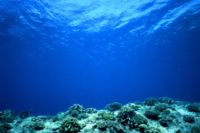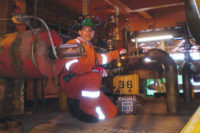The National Institute for Occupational Safety and Health (NIOSH) played a key role in monitoring and protecting the health of workers responding to the 2010 Deepwater Horizon disaster and Gulf of Mexico oil spill — an experience with important implications for planning the response to future disasters, according to a paper published in the July issue of the Journal of Occupational and Environmental Medicine, official publication of the American College of Occupational and Environmental Medicine (ACOEM).
In the paper, Dr. Margaret M. Kitt and colleagues outline NIOSH’s efforts to protect the safety of workers involved in the Deepwater Horizon response. Building on lessons from the World Trade Center terrorist attack and Hurricane Katrina, the goal was to improve health monitoring and surveillance of all disaster responders.
An important first step was developing a roster including more than 55,000 Deepwater Horizon responders, including information on training received, response activities, and contact information for follow-up. Monitoring and surveillance included health hazard evaluations (HHEs) for all categories of responders.
The information gathered in the HHEs was promptly posted on the NIOSH website to inform ongoing worker safety efforts. Key issues for the future include inconsistent internet access at the response sites and the need to make technical information understandable to responders.
In addition to providing technical guidance and communicating real-time information on the hazards, NIOSH was involved in evaluating and testing for potentially toxic exposures, including the oil dispersants used in cleanup activities. Recommendations for the future include increasing the use of personal protective gear, steps to manage heat stress management, approaches to beach cleaning, and reporting of injuries and potential hazards.
The role of biological monitoring for hazardous exposures and long-term follow-up studies of responder health also warrant future consideration. “The Deepwater Horizon response contributed greatly to the occupational safety and health community’s body of knowledge and provides critical insight to both future response events and our every day obligation to protect the nation's workers,” Dr. Kitt and coauthors conclude.
Citation
Kitt MM, Decker JA, Delaney L, Funk R, et al. Protecting workers in large-scale emergency responses: NIOSH experience in the Deepwater Horizon response. J Occup Environ Med. 2011;53(7):711-5.
About the Author
Dr. Kitt may be contacted for interviews at mkitt@cdc.gov.
About ACOEM
ACOEM (www.acoem.org), an international society of 5,000 occupational physicians and other health care professionals, provides leadership to promote optimal health and safety of workers, workplaces, and environments.
About Journal of Occupational and Environmental Medicine
The Journal of Occupational and Environmental Medicine (www.joem.org) is the official journal of the American College of Occupational and Environmental Medicine. Edited to serve as a guide for physicians, nurses, and researchers, the clinically oriented research articles are an excellent source for new ideas, concepts, techniques, and procedures that can be readily applied in the industrial or commercial employment setting.



